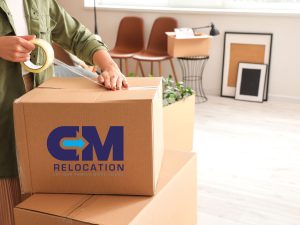Embarking on a relocation journey, especially an international one, involves meticulous planning and expert packing to ensure the safety of your cherished belongings. Whether you’re moving to a neighboring city or across continents, understanding effective packing methods is essential. This comprehensive guide outlines general packing ideas and also some tips for packing delicate items.
Strategic Pre-Move Packing: A Methodical Approach

Starting your pre-move packing on the right foot can significantly streamline the process. Consider these tips to enhance your packing efficiency:
Begin with Less-Used Items: Ease into your packing by starting with belongings you rarely use, such as those stored in basements, attics, sheds, or garages. This approach helps you build momentum and ensures that essential items remain accessible until the last minute.
Room-by-Room System: Organize your packing systematically by moving from one room to another. Group similar items together and label boxes accordingly. This method simplifies unpacking and ensures that related items are kept together.
Empty Cupboards and Drawers: To avoid adding unnecessary weight to furniture, remove items from cupboards and drawers before moving. Packing furniture and its contents separately enhances safety and minimizes the risk of damage.
Invest in Quality Packing Materials

When it comes to international moves, the quality of your packing materials plays a pivotal role in safeguarding your belongings. Relying on old towels or blankets may not suffice for long-distance travel. Prioritize using superior packing materials for optimal protection:
Variety of Boxes: Select a range of box sizes to accommodate different types of items. From small and medium boxes to larger ones, having the right sizes ensures efficient packing for glassware, electronics, clothing, and more.
Robust Tape: Invest in strong, durable packing tape to seal boxes securely. A tape dispenser can expedite the process and ensure consistent sealing.
Zip-Lock Bags: These bags are versatile for organizing small items and preventing loss during transit.
Packing Paper and Bubble Wrap: Prioritize high-quality packing paper or bubble wrap for delicate items. Avoid using newspapers, as the ink can potentially damage belongings.
Furniture Blankets and Pads: For larger items, such as furniture and appliances, furniture blankets provide a protective layer against scratches and impact.
Labels and Markers: Employ a clear labeling system to identify box contents and their destination rooms. This simplifies unpacking and helps movers handle boxes with care.
Masterful Handling of Fragile Items

Delicate items demand special attention and packaging techniques to withstand the rigors of transportation. Follow these steps to ensure the safety of your fragile belongings:
Invest in Premium Packing Materials: For fragile items, opt for high-quality materials such as bubble wrap, packing peanuts, and sturdy boxes. Avoid using low-quality substitutes that may compromise protection.
Individual Wrapping: Begin by inspecting the shape and size of each fragile item. Utilize packing paper or bubble wrap to fill empty spaces within the object and provide cushioning.
Layered Protection: Wrap each fragile item in packing paper, securing it with tape. Follow up with an additional layer of bubble wrap for enhanced shock absorption.
Cardboard Insulation: Create a sturdy base for fragile items by placing them on cardboard sheets and folding the sides for added support.
Careful Packing: Place wrapped fragile items within appropriately sized boxes, ensuring a snug fit to prevent movement. Fill any remaining gaps with packing materials to immobilize items during transit.
Double-Box Method: For utmost protection, consider using a double-box technique. Place the smaller box containing fragile items within a larger box, insulating the space between them with packing materials.
Label and Communication: Clearly label boxes containing fragile items with conspicuous “fragile” stickers and directional arrows. Inform your moving company about these boxes to ensure careful handling.

Mastering the art of effective packing is a key component of a successful international move. By adhering to systematic packing methods and investing in quality materials, you should be able to successfully pack on your own.
Alternatively, you may engage the services of a full-service moving company like CM Relocation to help take the stress away. Contact us today to see how we can help with packing, moving and shipping your personal effects for you.
